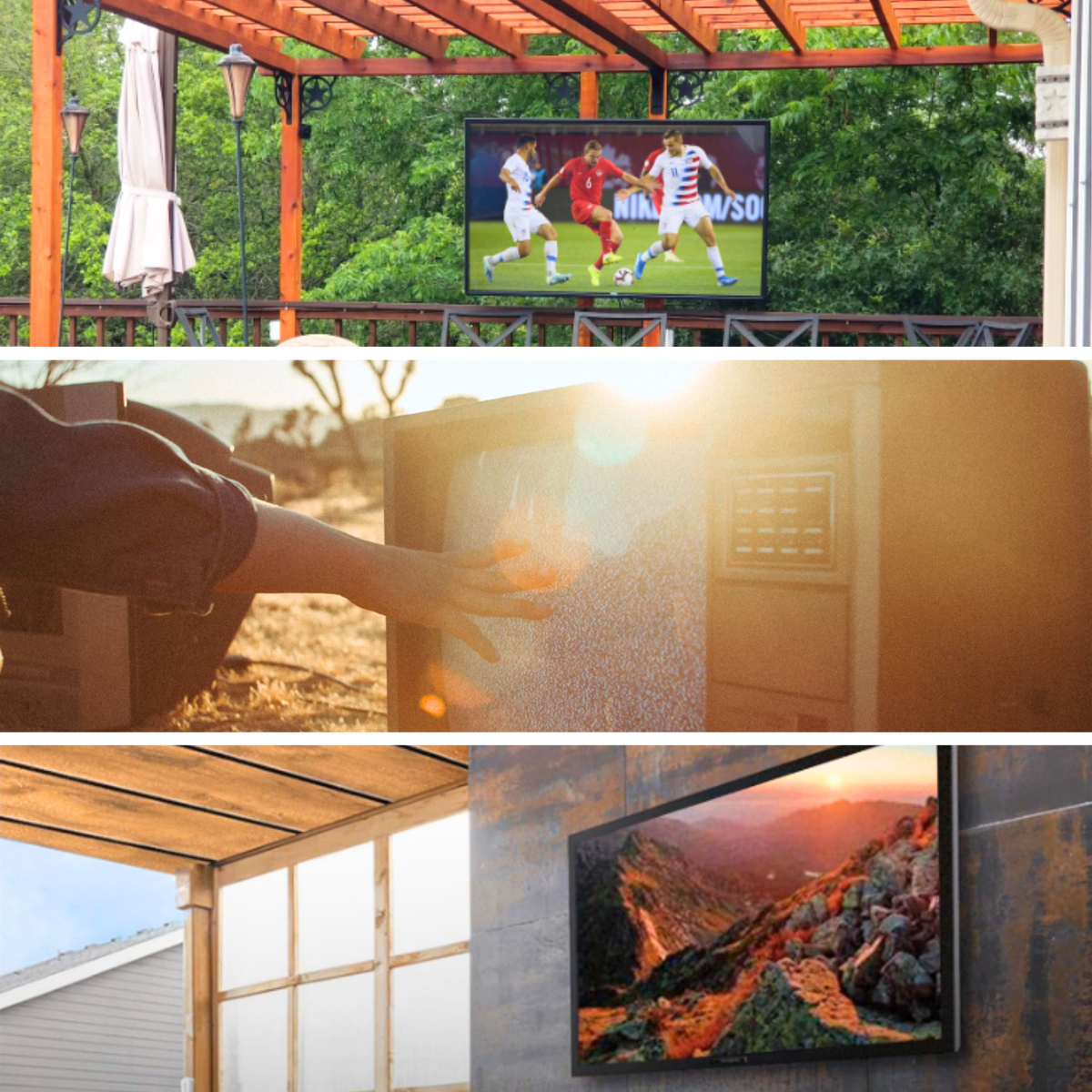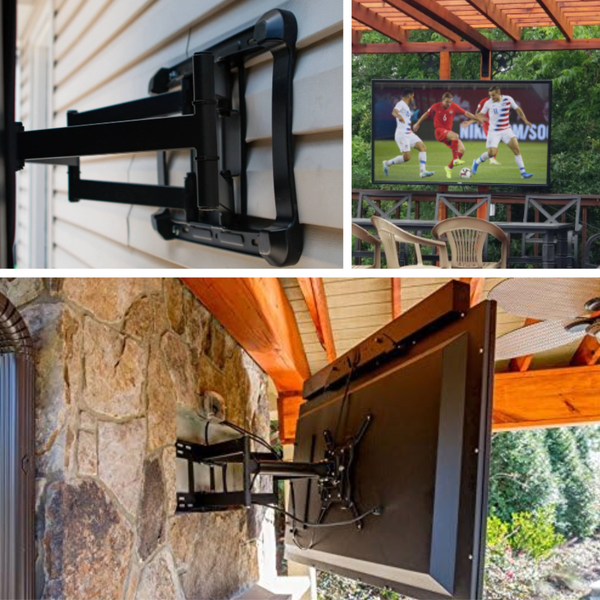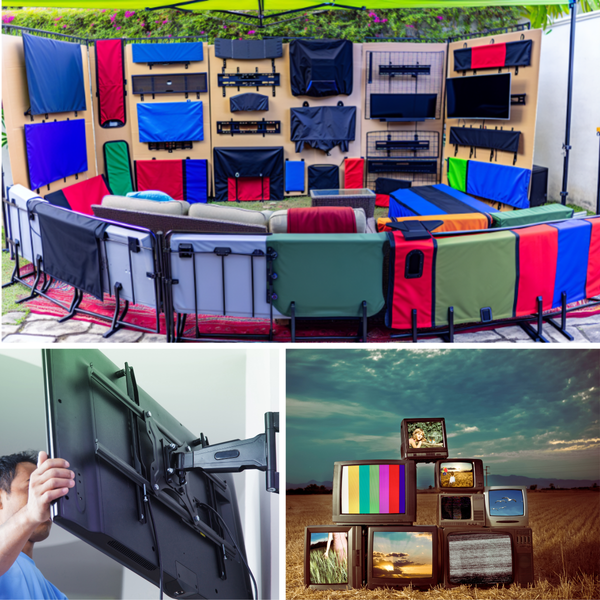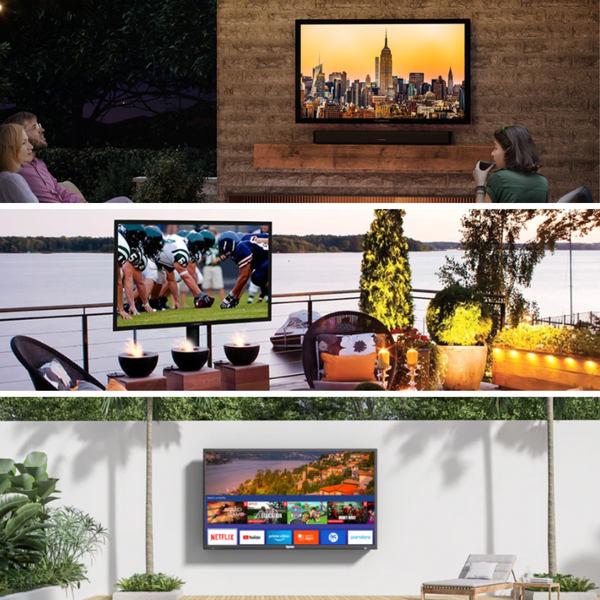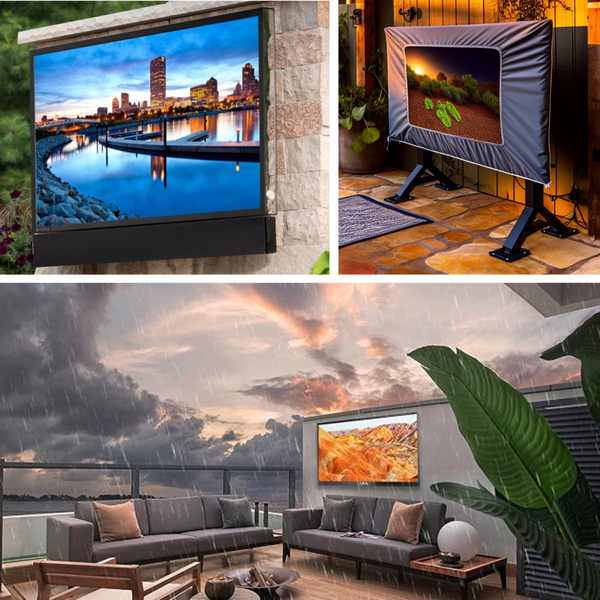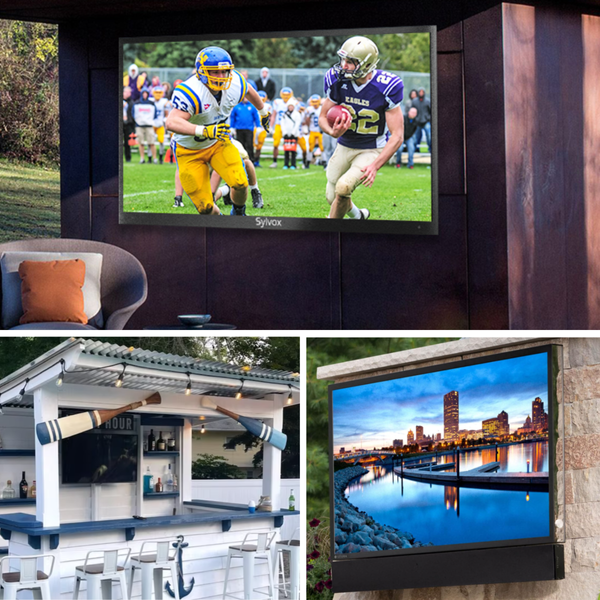When it comes to setting up a television outside, many homeowners wonder about the differences between an outdoor TV and a regular TV. Whether you're looking to create an entertainment space on your covered patio or want to enjoy your favorite shows poolside, understanding these differences is crucial.
Key Takeaways:
- Outdoor TVs are specifically designed to withstand weather elements and offer better visibility in bright conditions compared to regular TVs.
- Regular TVs are not built to handle extreme temperatures, moisture, or direct sunlight, which can affect their longevity and performance outdoors.
- The cost of outdoor TVs is generally higher due to their specialized construction and features, but they provide a better viewing experience and durability for outdoor use.
Understanding the Basics: Outdoor vs. Indoor TVs
When considering a TV for outdoor use, it's essential to recognize that most indoor TVs are not built to endure the elements. Outdoor televisions, on the other hand, are designed with weather resistance in mind. They can handle everything from high humidity to full sun exposure, ensuring that your investment is protected against the unpredictable nature of outdoor environments.
Weather Resistance: A Key Feature
Weather resistance is one of the most significant factors that set outdoor TVs apart from their indoor counterparts. Outdoor TVs come with ingress protection ratings that indicate their level of resistance to dust and moisture. This means that whether it's rain or just a high level of humidity, an outdoor TV is built to withstand these conditions without succumbing to a short circuit or screen damage.

Enhanced Picture Quality for Outdoor Viewing
The picture quality of a TV outdoors needs to be considerably better than that of a living room TV due to the presence of natural light. Outdoor TVs are often equipped with brighter screens and anti-glare technology to combat the effects of direct sunlight, ensuring that the picture remains clear and vibrant even in full sun conditions.
Built to Withstand Extreme Temperatures
Extreme temperatures can wreak havoc on electronic devices. Outdoor TVs are engineered to operate in a wider range of temperatures, from the chill of a winter evening to the heat of a summer day. This is a stark contrast to regular TVs, which are designed for the stable environment of your home and may not function correctly or could be damaged when exposed to more heat or cold than they can handle.
The Durability of Outdoor TV Enclosures
Outdoor TV enclosures offer protection that goes beyond what's found in standard TVs. These enclosures are typically made from materials that can resist corrosion and physical impacts. This means that your outdoor TV is not only safe from the weather but also from the occasional stray football or frisbee.
Smart Features and Connectivity
Just like indoor smart TVs, the best outdoor TVs come equipped with smart features and connectivity options. This includes built-in streaming apps, Wi-Fi capabilities, and HDMI inputs for connecting streaming devices. The difference lies in the construction, which ensures that these features work seamlessly in outdoor conditions.

Audio Quality in Different Environments
When considering what's the difference between an outdoor TV and a regular TV, one aspect that often gets overlooked is audio quality. Outdoor TVs are designed with robust sound systems to compete with ambient noise. Unlike an indoor TV, which relies on the acoustics of a room to amplify sound, an outdoor TV must provide clear audio in open spaces. Manufacturers typically integrate powerful speakers and sound optimization technologies to ensure that whether you watch TV during a bustling backyard barbecue or a quiet evening under the stars, you won't miss a beat.
Furthermore, outdoor TV pros understand that the audio needs for a full sun TV differ from those of a full shade outdoor TV. TVs in full sun environments have to counteract not only the noise of nature and human activity but also the sound-dampening effects of direct sunlight. On the other hand, full shade models may not need as much power but still benefit from quality speakers to deliver crisp sound. This attention to audio detail ensures that your watching TV experience outdoors is just as immersive as it is indoors.
Sunlight Readability: Full Shade vs. Direct Sun Models
When exploring what's the difference between an outdoor TV and a regular TV, sunlight readability is a crucial factor. Full shade outdoor TVs are designed to perform in areas that are predominantly covered and do not receive direct sunlight. These models typically have a brighter screen than indoor TVs to counteract ambient light and provide a clear picture even in shaded outdoor conditions. The screens are often finished with anti-glare coatings to further enhance visibility when competing with indirect sunlight.
In contrast, TVs made for direct sun exposure are engineered with even higher brightness levels and specialized panel technology to combat the intense glare and heat from the sun. These direct sun models are equipped with extra rugged materials to prevent damage from UV rays and often feature enhanced cooling systems to maintain optimal functioning in hot conditions. When selecting an outdoor TV, it's essential to consider the placement and the amount of sun exposure to choose between a full shade model or one that can handle the brilliance of direct sun.

The Innovation of Weatherproof Sound Systems
The difference between an outdoor TV and a regular TV extends to audio quality as well. Outdoor TVs are often paired with weatherproof sound systems that are built to deliver high-quality audio in open-air environments. These systems are designed to overcome the challenges of outdoor acoustics, where sound can easily dissipate without walls to contain it. Manufacturers have innovated speakers that offer clear and powerful sound to ensure that your viewing experience is accompanied by audio that matches the visual quality.
Moreover, these weatherproof sound systems are constructed with materials that resist corrosion, moisture, and temperature extremes, ensuring longevity and consistent performance. Some outdoor TV models come with built-in all-weather speakers, while others may require separate installation of an external sound system. In either case, the integration of these sound systems is seamless, often designed to blend with the outdoor aesthetic and withstand the elements, just like the TV itself. Whether you're watching a movie under the stars or catching up on your favorite shows in the comfort of your patio, the right sound system can significantly enhance your outdoor entertainment experience.
Integration with Home Automation Systems
The short answer to the seamless integration of outdoor TVs with home automation systems is that it's not just possible; it's becoming the norm. The latest weatherproof TVs come equipped with smart features that allow them to connect with various devices over Wi-Fi or Bluetooth. This means you can control your outdoor entertainment setup just as easily as your standard TV inside. Whether it's adjusting volume, changing channels, or selecting a streaming service, you can manage it all from your smartphone or tablet.
Moreover, the integration extends beyond mere convenience. It enhances TV performance by allowing users to create custom scenes or settings that adjust based on the time of day or the specific event. For instance, a full sun outdoor TV can be programmed to adjust its picture settings when transitioning from bright afternoon light to the softer glow of dusk. Similarly, a weatherproof TV in a full shade area can sync with external lighting to ensure the screen is always visible and the ambiance is just right for your outdoor viewing pleasure.
The Cost of Bringing TV Outside
When it comes to cost, there's a noticeable difference between outdoor and regular TVs. Outdoor models are on the higher end of the price spectrum due to their specialized features and construction. While this may mean spending more money upfront, the longevity and performance of an outdoor TV can offer better value in the long run.

Screen Size and Placement Considerations
Choosing the right screen size and placement for your outdoor TV is crucial. Outdoor TVs come in various sizes, just like indoor TVs, but you'll need to consider the viewing distance, which is often greater outdoors. Additionally, full shade, partial shade, and full sun models are available to match the specific conditions of your outdoor space.
The Verdict on Viewing Experience
The viewing experience is significantly different when comparing outdoor televisions to regular TVs. Outdoor TVs are designed to provide optimal picture quality and color accuracy from certain angles and in various lighting conditions, which is something that regular TVs may not be able to match when taken outside.
Installation and Maintenance
Installing an outdoor TV requires more consideration than setting up a new TV in your living room. Factors such as mounting height, proximity to power sources, and protection from the elements need to be taken into account. Maintenance also differs, as outdoor TVs may require more frequent cleaning and checks to ensure all weatherproofing measures remain intact.
Selecting the Right Outdoor TV for Your Space
When choosing the best outdoor TV for your space, consider the location (full sun, partial sun, or full shade), the type of outdoor area (open or covered patio), and the features you desire (streaming services, remote controls, etc.). Researching and understanding the specifications of different models will help you make an informed decision.

The Longevity of Outdoor TVs
The lifespan of an outdoor TV compared to a regular TV can be quite similar if the outdoor TV is correctly installed and maintained. However, due to the harsher conditions, some outdoor TVs may have a shorter lifespan than indoor TVs. It's important to follow the manufacturer's guidelines for care to ensure your outdoor TV lasts as long as possible.
Summary
In summary, the difference between an outdoor TV and a regular TV lies in their design and functionality. Outdoor TVs are built to endure weather conditions, offer better visibility in bright environments, and maintain performance in extreme temperatures. While the cost may be higher, the durability and specialized features of outdoor TVs make them a worthwhile investment for those looking to enjoy television in their outdoor spaces.
FAQ Section
Q: Can I use a regular TV outside if it's under a patio cover?
A: While a patio cover does offer some protection, regular TVs are not designed for outdoor use and can still be damaged by humidity, temperature fluctuations, and indirect weather effects. An outdoor TV is recommended for any outdoor space to ensure longevity and performance.
Q: Are outdoor TVs waterproof?
A: Most outdoor TVs are weatherproof to a certain degree and can handle rain and humidity. They come with ingress protection ratings that specify their level of water resistance. However, it's always best to check the manufacturer's specifications for the exact level of water protection.
Q: How do I maintain my outdoor TV?
A: To maintain your outdoor TV, regularly clean the screen and enclosure, check for any signs of wear or damage, and ensure that all weatherproofing seals are intact. It's also important to follow any specific maintenance guidelines provided by the manufacturer.



